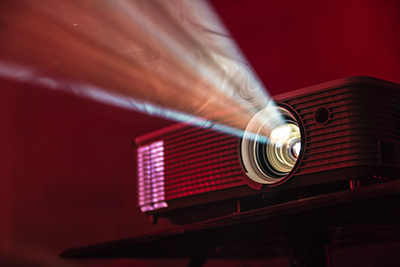Ranking of Closed Captions Formats in Movie Theaters

As a movie-goer who is hard-of-hearing, I have had many experiences with captioning formats used throughout various movie theaters. From the good, the bad, and the meh, I’ve decided to rank the three most common versions of captions that I’ve used in theaters.
3. Cup holder captions
As implied by the name, this style of captions goes into the cup holder of your seat. The issues I have with this is that I find myself looking back and forth between the captions and the screen, which can become a bit annoying after a while. Looking back and forth between the captions and the screen can also cause me to miss out briefly on what is visually happening in the movie, which can become a problem depending on the scene. Until humans develop the ability to have one eye focus on one thing and the other looking at something else, the cup holder captions will remain my least favorite.
2. Glasses captions
Glasses style captions are regular glasses that display the captions in the movie in a transparent, typically green font. The pros of this style of captions is that since they are glasses, that means that when one is wearing them it allows the captions to be displayed on the screen. This helps fix the problem that I experience with the cup holder captions, However, it can be a struggle to set them up to where you want the captions to be placed, and I’ve also noticed that some of the dialogue can be cut off if you don’t place it correctly.
1. Open captions
Open captions is when the dialogue is displayed on the screen itself, no glasses or cup holder needed. The reason why it takes the number one spot on my ranking is that since the captions are on the screen, there is little to no technical difficulty/difficulty seeing them. The only issue, which is more of an industry issue rather than the captions themselves, is that not all theaters have them. However, with the difficulty that I and other deaf and hard of hearing people experience with the other closed captions devices, open captions are the easiest and smoothest way to watch movies in the theaters. Open captions are not only beneficial to those who are deaf and hard of hearing, but people who have auditory processing disorders, and movies/scenes where the dialogue are hard to understand. Fortunately, large chains such as AMC and Regal have open captions showings for movies across many of their theaters. However, there’s still work to be done to have open captions showings of movies in theaters in at least most of the US.